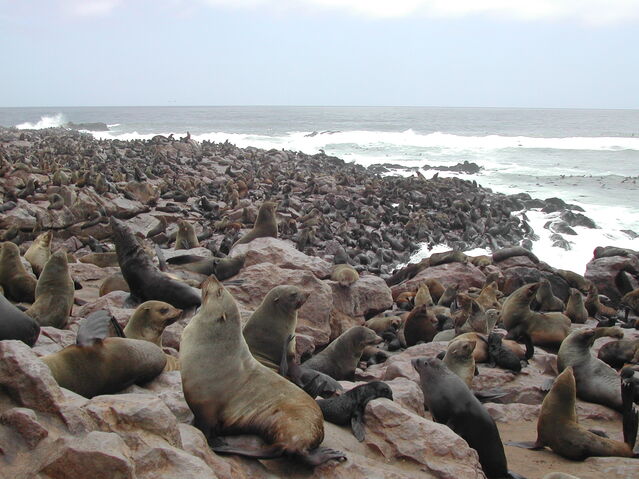Environment
Rapid Vocal Recognition in Fur Seal Moms and Pups
Within hours of birth, seal mothers and pups can recognize each other’s voices.
Posted December 13, 2022 Reviewed by Abigail Fagan
Key points
- Researchers used audio playback shortly after birth to investigate the development of mother-pup vocal recognition in Cape fur seals.
- Cape fur seal mothers recognize their pup’s voice 2-4 hours after birth, and pups recognize their mother’s voice 4-6 hours after birth.
- This is the fastest establishment of mother-offspring vocal recognition for any mammal species (including humans) described to date.

From mid-October through early January, the Pelican Point Cape fur seal breeding colony in Namibia is bustling with activity. Thousands of seals tightly pack themselves onto the long, sandy beach. Males battle for breeding rights while females give birth to pups.
It’s “a very noisy environment, as all seals are vocalizing at the same time—and also a bit smelly!” according to Isabelle Charrier, senior researcher at CNRS (National Center for Scientific Research in France).
Within the first 24 hours of birth, female Cape fur seals may leave their pups for short periods to go for a cooling swim. But they must locate their own pup again; fur seal moms won’t nurse pups that aren’t their own. In fact, a pup that approaches a female that isn’t its mother may end up with a serious bite.
So how do seal moms and pups find one another among the cacophonous expanse of sleek bodies? Charrier and her graduate student, Mathilde Martin, suspected that mother-pup pairs may recognize each other’s voices.
Familiar Voices
In a new study, Charrier, Martin, and colleagues used playback experiments to test Cape fur seal mothers and pups just hours after birth.

To minimize disturbance to the animals, Charrier and Martin had to crawl among the seals while keeping a respectful distance. When they detected a female in labor or evidence that a birth just happened, the pair recorded the vocalizations of both mother and pup using equipment attached to the end of a 5-meter pole.
Charrier and Martin then tested mothers and pups separately using playbacks of calls from their own offspring or mother and calls from an unrelated seal.
They found that Cape fur seal mothers can recognize the voice of their pup two to four hours after birth. That’s earlier than other mammals that have been tested; for instance, ewes recognize the voice of their offspring at 24 hours and Australian sea lions at 48 hours. In humans, studies have shown that only 40% of women succeed in recognizing their own baby’s cries after 24 hours.
When it came to the pups, the researchers found they could recognize their mother’s voice four to six hours after birth. Again, this timing is much shorter than in other mammals. In humans, babies seem to be able to recognize their mother’s voice by one month of age.
“We did not expect the pups to be that fast,” says Charrier. “Some pups were able to identify their mother's voice even at two hours and also after hearing very few calls from their mums!”

Learning Environment
One particular result especially impressed Charrier and Martin. A three-hour-old pup was able to recognize its mother’s calls during the playback—even though it had heard its mother call only a single time.
This result suggests to Charrier and colleagues that pups may begin learning their mother’s voice in utero. During the eight-month gestation period of the Cape fur seal, females also nurse their pup from the previous year. As a mother seal communicates with her pup, the developing pup in her womb is also exposed to her voice. The researchers suggest that there may be a prenatal learning process during which fetuses imprint on their mother’s calls, allowing for rapid vocal recognition soon after birth.
Understanding the development of individual vocal recognition in Cape fur seals raises more questions about their cognitive abilities and learning processes, says Charrier.
“Recognizing one given individual among hundreds is not easy in a colonial environment. Showing that a newborn can realize such a hard task only a few hours after birth is amazing,” she says. “Such knowledge is important when studying mammals, and even humans, as we know that humans are not as good as these seals.”
References
Martin M, Gridley T, Elwen S, and Charrier I. Early onset of postnatal individual recognition in a highly colonial mammal species. Proceedings of the Royal Society B 289:20221769. Doi: 10.1098/rspb.2022.1769.


